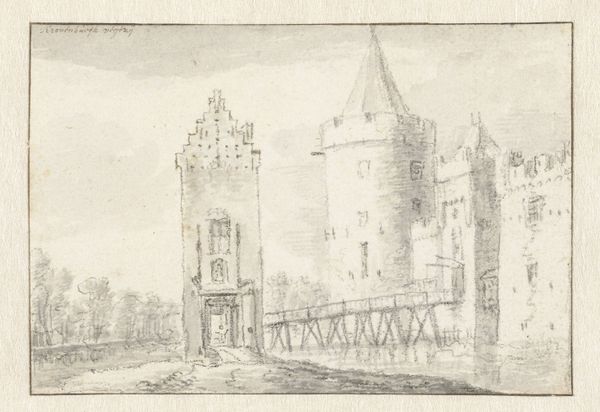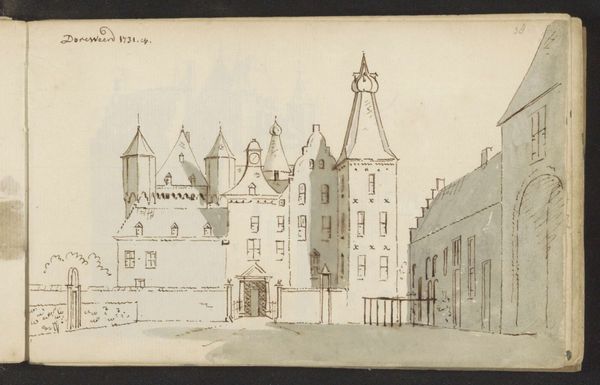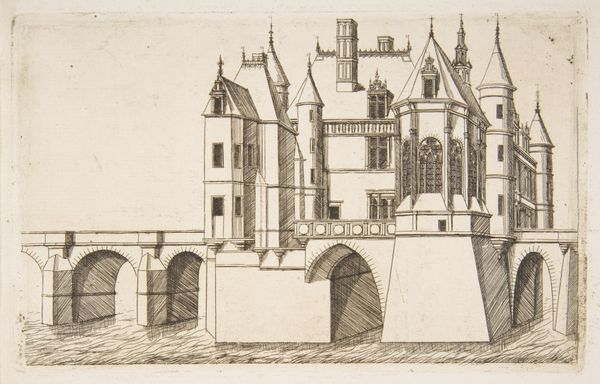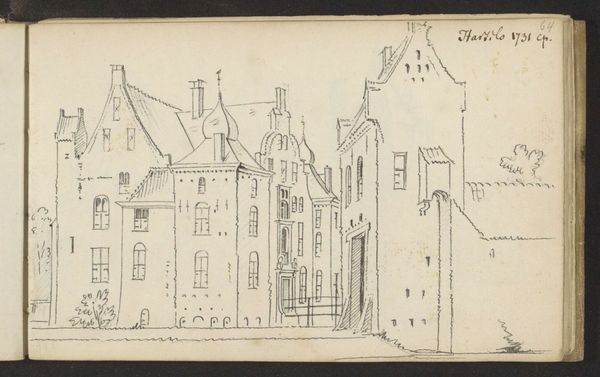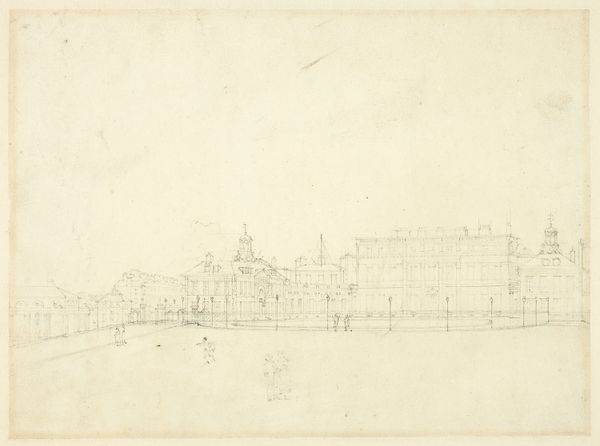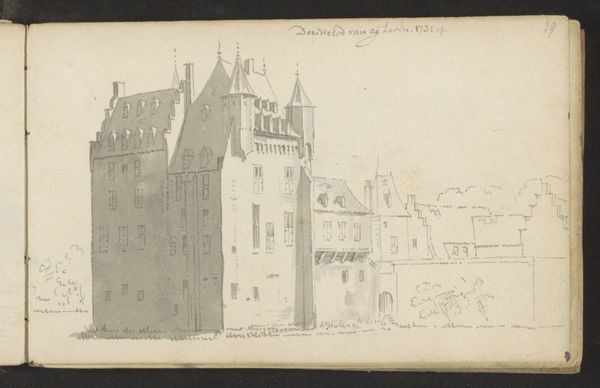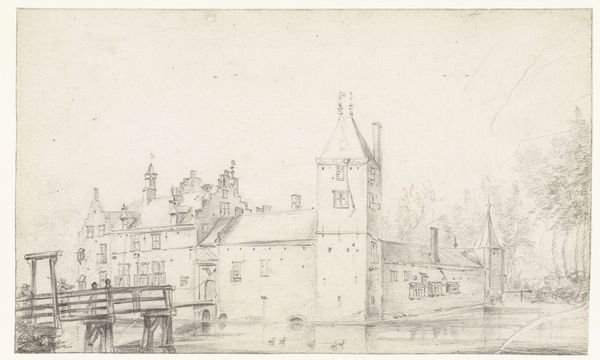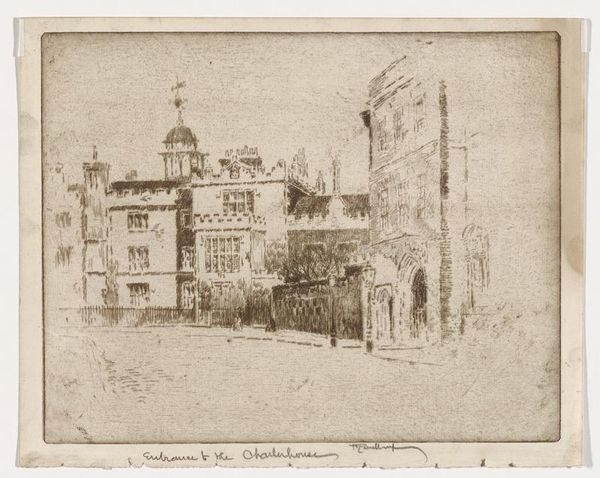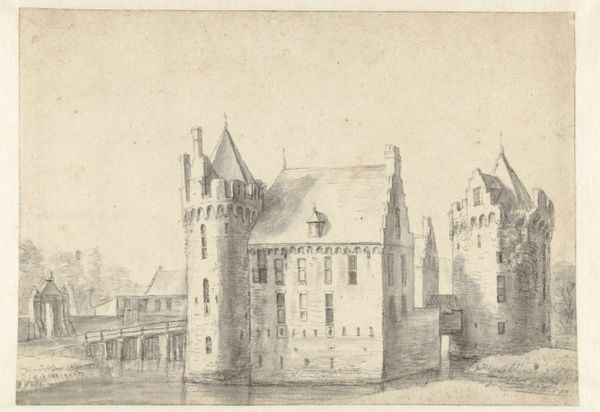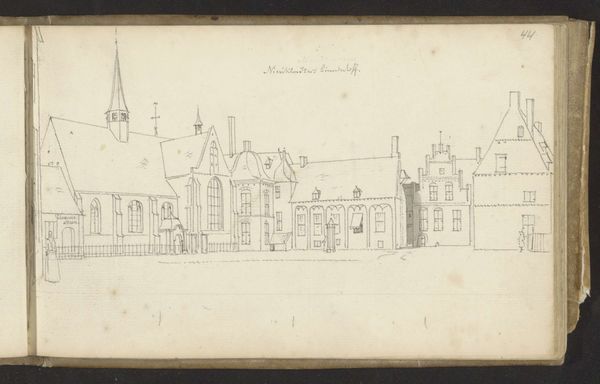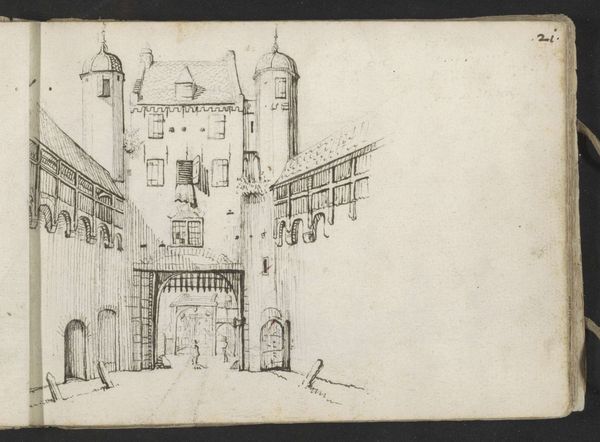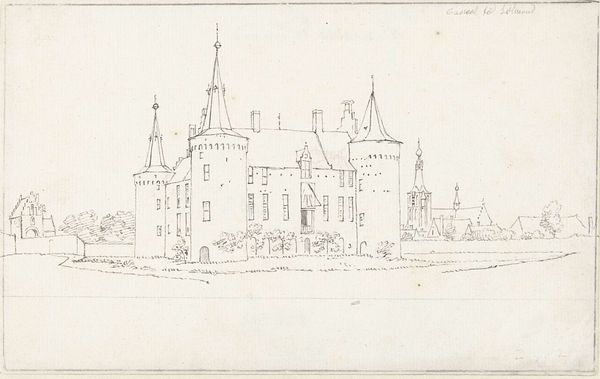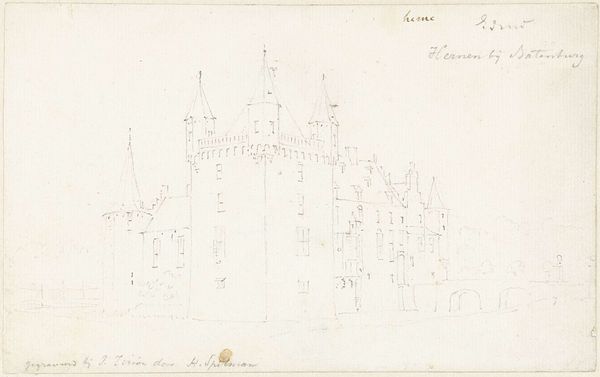
drawing, paper, pencil
#
architectural sketch
#
drawing
#
aged paper
#
dutch-golden-age
#
old engraving style
#
sketch book
#
landscape
#
paper
#
personal sketchbook
#
sketchwork
#
pen-ink sketch
#
pencil
#
pen work
#
sketchbook drawing
#
cityscape
#
storyboard and sketchbook work
Dimensions: height 150 mm, width 297 mm
Copyright: Rijks Museum: Open Domain
Curator: This is "Het kasteel te Buren" or "The Castle at Buren", a drawing in pencil and pen and ink on paper, by Jan de Beijer, created sometime between 1750 and 1758. Editor: My initial reaction is one of quiet contemplation. The composition feels carefully balanced despite the asymmetry of the castle itself. The artist clearly delineates light and shadow, but there is overall a serene quality to the sketch that calms the spirit. Curator: De Beijer was known for his topographical drawings, commissioned by wealthy patrons. He meticulously documented existing structures, preserving a record of places soon to be lost to time, progress, or neglect. Editor: Yes, the detail in the stonework and windows reveals the structure, but the lack of human figures—or even an implied narrative—shifts the focus solely onto the castle as an object, emphasizing its form, and thus, I argue, subtly distancing the viewer. Curator: Consider the materiality though. This is not just a drawing; it's a record made on paper, a scarce commodity at the time, created using graphite and ink, tools affordable to a growing middle class but certainly not commonplace. It tells of shifts in patronage of the arts and who these views of buildings was catering for. Editor: Absolutely, and the very age of the paper contributes to its meaning, like palimpsest in architecture. I’m struck by the hatching, used to build up tone—the shadows almost become tangible textural elements on the flat plane of the paper. It allows us to consider not only the scene itself, but also our viewing position in terms of how the castle may once have existed. Curator: Indeed, its aesthetic simplicity invites closer inspection of not just the castle, but the world that shaped it and the culture that recorded it, using available materials. This act of documentation is deeply revealing of its social and political context. Editor: Ultimately, De Beijer's technical skill enhances a seemingly objective scene, revealing a depth and complexity within its architectural form and materials. Curator: A wonderful reflection on the layered narrative embedded within its construction. Thank you.
Comments
No comments
Be the first to comment and join the conversation on the ultimate creative platform.

